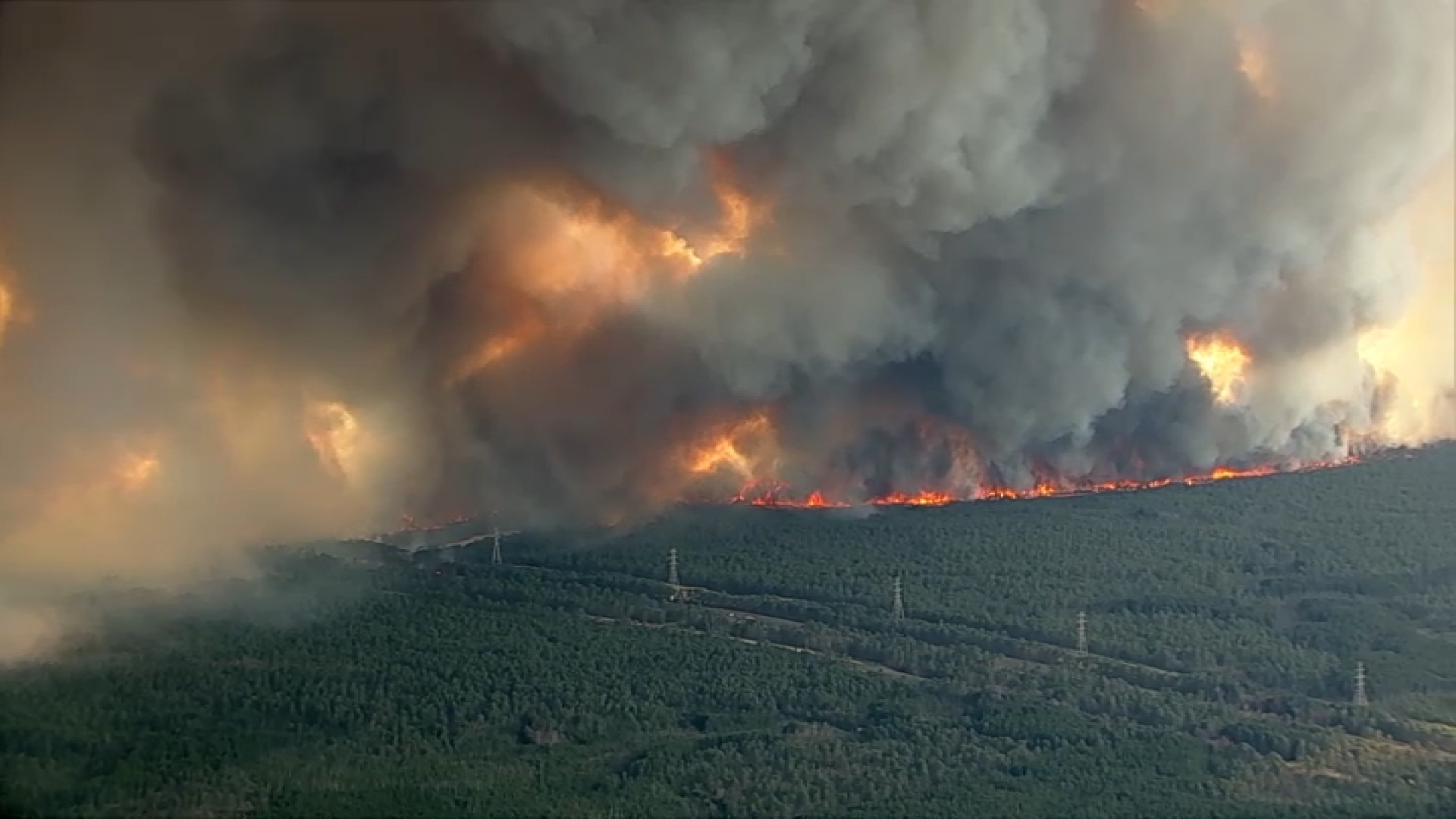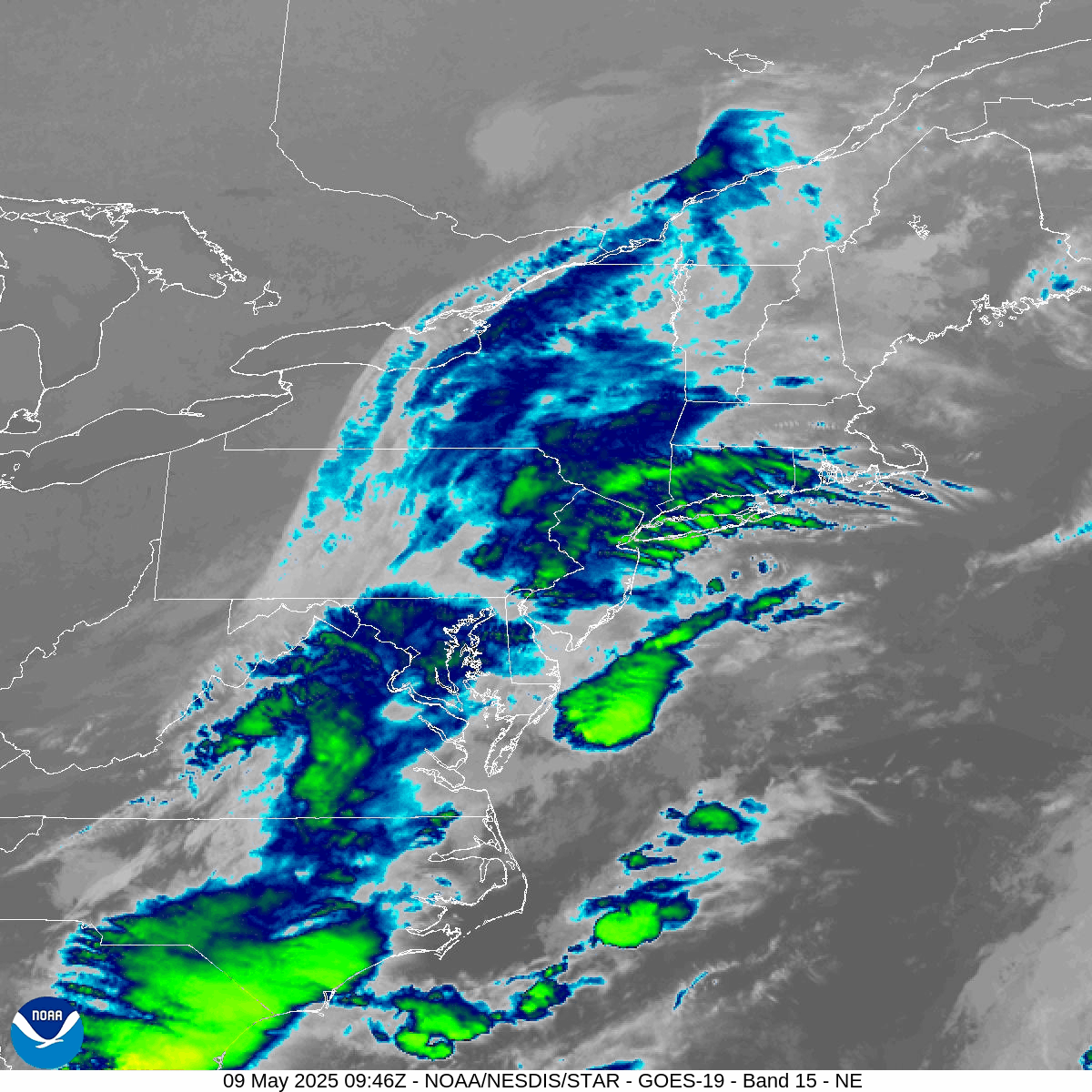NJ Wildfire Forces Evacuations: What You Need to Know
'Nerve-Wracking Inferno': NJ Wildfire Triggers Mass Evacuations, Road Closures
Introduction: The Growing Threat of Wildfires Hits Home
Okay, picture this: You're enjoying a peaceful afternoon, maybe sipping some iced tea on your porch, and suddenly, the air fills with smoke. Not the pleasant kind from a barbeque, but a thick, acrid smell that signals something far more sinister. That's the reality many residents in Ocean County, New Jersey, faced recently as a massive wildfire ripped through the landscape. The situation quickly escalated, forcing thousands to evacuate their homes and shutting down major roadways. It's a scene straight out of a disaster movie, but unfortunately, it's all too real for the affected communities.
The Scale of the Blaze: 8,500 Acres and Counting
This isn't your average brush fire. We're talking about a raging inferno that has consumed a staggering 8,500 acres. To put that into perspective, that's roughly the size of several Central Parks combined! The sheer scale of the blaze is what makes it so incredibly challenging to contain. It's like trying to hold back the ocean with a teacup. The fire's rapid spread has been fueled by dry conditions, strong winds, and an abundance of flammable vegetation.
Evacuations: A Race Against the Flames
When a wildfire of this magnitude threatens, the safety of residents is the top priority. That's why mandatory evacuations were ordered in several areas. Can you imagine the anxiety of having to pack up your life in a matter of minutes, not knowing if you'll have a home to return to? It's a nerve-wracking experience that no one should have to endure.
Who is Affected?
The evacuations primarily affected residents in the immediate path of the fire. Specific neighborhoods and communities were placed under mandatory evacuation orders. Emergency services worked tirelessly to ensure everyone was safely removed from harm's way.
Where to Find Shelter
Emergency shelters were set up at local schools and community centers to provide temporary housing and support for evacuees. These shelters offered a safe haven for those displaced by the fire, providing them with food, water, and a place to rest.
Road Closures: Cutting Off Communities
The wildfire not only threatened homes but also disrupted travel and commerce. Several major roads were shut down to prevent people from driving into the danger zone and to allow emergency vehicles to move freely. These closures created significant traffic congestion and made it difficult for people to reach their destinations.
Impact on Commuters
Commuters faced long delays and detours due to the road closures. The detours added significant time to their journeys, causing frustration and inconvenience.
Disruption to Local Businesses
Local businesses also suffered as a result of the road closures. Reduced traffic flow meant fewer customers, leading to a decline in sales and revenue.
The Heroic Efforts of Firefighters: Battling the Beast
Let's take a moment to acknowledge the incredible bravery and dedication of the firefighters battling this blaze. They're the real heroes, risking their lives to protect our communities. They're working tirelessly, often in grueling conditions, to contain the fire and prevent it from spreading further. It's a testament to their training, skill, and unwavering commitment.
Ground Crews on the Front Lines
Firefighters on the ground are the first line of defense, using hoses, tools, and specialized equipment to battle the flames directly. They work in close proximity to the fire, facing intense heat, smoke, and potential hazards.
Aerial Support: Eyes in the Sky
Helicopters and airplanes play a crucial role in fighting wildfires. They drop water and fire retardant on the flames, helping to slow the fire's spread and protect vulnerable areas.
The Cause of the Fire: An Investigation Underway
The million-dollar question: What sparked this devastating wildfire? An investigation is currently underway to determine the cause. It could be anything from a carelessly discarded cigarette to a lightning strike. Until the investigation is complete, the exact cause remains unknown.
Potential Natural Causes
Lightning strikes are a common cause of wildfires, particularly during dry thunderstorms. High winds can also contribute to the spread of fires that start naturally.
Human-Related Factors
Human activities, such as unattended campfires, equipment malfunctions, and arson, can also ignite wildfires. Carelessness and negligence are often factors in these incidents.
The Environmental Impact: A Devastating Loss
Wildfires have a devastating impact on the environment. They destroy forests, wildlife habitats, and ecosystems. The loss of trees and vegetation can lead to soil erosion, water pollution, and increased greenhouse gas emissions. It's a long-term ecological disaster.
Impact on Wildlife
Many animals are killed or displaced by wildfires. The loss of habitat can have a lasting impact on wildlife populations and ecosystems.
Air Quality Concerns
Wildfires release large amounts of smoke and pollutants into the atmosphere, causing air quality to deteriorate. This can pose a health risk to people with respiratory problems.
The Economic Toll: A Costly Disaster
Wildfires can have a significant economic impact on communities. The cost of fighting the fire, repairing damaged infrastructure, and assisting displaced residents can be substantial. Businesses may suffer losses due to closures and disruptions, and property values may decline. It's a financial burden that can take years to recover from.
Insurance Claims and Property Damage
Homeowners and businesses may face significant losses due to property damage caused by the wildfire. Insurance claims can help to cover some of these costs, but the process can be complex and time-consuming.
Impact on Tourism
Wildfires can deter tourists from visiting affected areas, leading to a decline in tourism revenue. This can have a significant impact on local businesses that rely on tourism.
Community Resilience: Coming Together in Times of Crisis
Despite the devastation, the wildfire has also brought out the best in the community. Neighbors are helping neighbors, volunteers are providing support, and local organizations are stepping up to offer assistance. It's a reminder that even in the darkest of times, human compassion and resilience can shine through.
Volunteer Efforts
Volunteers are playing a crucial role in providing assistance to evacuees, firefighters, and other affected individuals. They are donating their time, skills, and resources to support the community.
Donations and Support
Organizations and individuals are donating food, water, supplies, and financial assistance to help those affected by the wildfire. This support is essential for helping the community recover.
Lessons Learned: Preparing for the Future
Wildfires are becoming increasingly common due to climate change and other factors. It's essential to learn from this experience and take steps to better prepare for future events. This includes implementing fire prevention measures, improving emergency response plans, and promoting community awareness.
Fire Prevention Measures
Clearing brush and vegetation around homes, maintaining equipment properly, and being careful with campfires and other potential ignition sources can help to prevent wildfires.
Emergency Preparedness
Having a family emergency plan, assembling a disaster kit, and staying informed about potential hazards can help individuals and families to be better prepared for wildfires and other emergencies.
The Role of Climate Change: A Growing Concern
Scientists agree that climate change is exacerbating the risk of wildfires. Warmer temperatures, drier conditions, and longer fire seasons are creating a perfect storm for these devastating events. Addressing climate change is crucial to mitigating the threat of wildfires in the long term.
Impact on Fire Season
Climate change is extending the length of the fire season, making it more challenging to control and contain wildfires.
Increased Frequency and Intensity
Climate change is also increasing the frequency and intensity of wildfires, making them more destructive and difficult to manage.
Staying Informed: Where to Get Updates
During a wildfire, it's essential to stay informed about the latest developments. Local news outlets, emergency management agencies, and social media are all valuable sources of information. Be sure to rely on official sources and avoid spreading rumors or misinformation.
Official Sources of Information
The New Jersey Forest Fire Service, local emergency management agencies, and reputable news organizations are the best sources of information during a wildfire.
Social Media's Role
Social media can be a useful tool for staying informed, but it's important to verify information before sharing it. Follow official accounts and be wary of unverified sources.
The Aftermath: Recovery and Rebuilding
Once the fire is extinguished, the long process of recovery and rebuilding begins. This can involve clearing debris, repairing damaged infrastructure, and providing support to displaced residents. It's a challenging but necessary step towards restoring the community.
Debris Removal and Cleanup
Removing debris and cleaning up affected areas is a crucial step in the recovery process. This can involve hazardous materials and require specialized equipment.
Rebuilding Homes and Businesses
Rebuilding homes and businesses that were damaged or destroyed by the wildfire can be a long and costly process. Financial assistance and community support are essential for helping people to rebuild their lives.
How You Can Help: Supporting the Affected Communities
Even if you're not directly affected by the wildfire, there are ways you can help. Donating to reputable charities, volunteering your time, and spreading awareness are all valuable contributions. Every little bit helps to support the affected communities during this difficult time.
Donate to Reputable Charities
Donating to established charities that are providing assistance to wildfire victims is a great way to support the recovery effort.
Volunteer Your Time
Volunteering your time to help with cleanup, distribution of supplies, or other tasks is another way to make a difference.
The Long-Term Impact: A New Normal?
Wildfires are becoming a fact of life in many parts of the world. As climate change continues to worsen, we may need to adapt to a "new normal" of more frequent and intense wildfires. This requires a shift in our thinking, a greater emphasis on fire prevention, and a commitment to building more resilient communities.
Adapting to a Changing Climate
Adapting to a changing climate requires a multi-faceted approach, including reducing greenhouse gas emissions, improving fire management practices, and building more resilient infrastructure.
Building Resilient Communities
Building resilient communities means investing in infrastructure that can withstand extreme weather events, promoting community preparedness, and fostering a culture of collaboration and support.
Conclusion: A Call to Action
The Ocean County wildfire serves as a stark reminder of the growing threat of wildfires. It's a wake-up call to take action on climate change, prioritize fire prevention, and support our communities in times of crisis. Let's learn from this experience and work together to create a safer, more resilient future for all.
Frequently Asked Questions (FAQs)
- What should I do if I'm under an evacuation order?
Pack a go-bag with essentials like medications, important documents, and personal items. Secure your home by closing windows and doors, and then evacuate immediately to a designated shelter or safe location. - How can I protect my home from wildfires?
Create a defensible space around your home by clearing brush and vegetation within 30-100 feet. Clean gutters and roofs regularly, and consider using fire-resistant building materials. - Where can I donate to support wildfire relief efforts?
Reputable organizations like the American Red Cross, the Salvation Army, and local community foundations are good options for donating to wildfire relief efforts. - What are the long-term health effects of wildfire smoke?
Exposure to wildfire smoke can cause respiratory problems, heart issues, and other health complications. It's important to protect yourself by staying indoors, using air purifiers, and wearing a mask if necessary. - How can I stay informed about wildfires in my area?
Follow local news outlets, emergency management agencies, and the National Weather Service for the latest updates and information on wildfires in your area. Sign up for emergency alerts and notifications if available.



